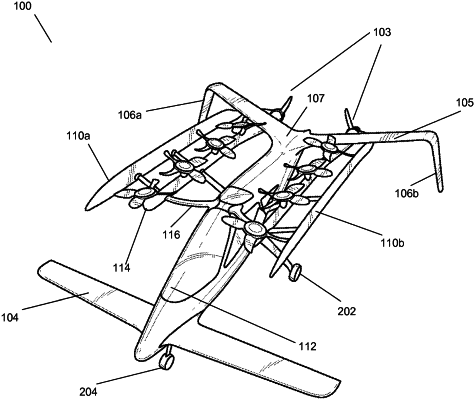| CPC B64D 31/00 (2013.01) [B64C 3/16 (2013.01); B64C 29/00 (2013.01); B64C 29/0025 (2013.01); B64C 39/12 (2013.01); Y02T 50/10 (2013.01)] | 17 Claims |

|
1. A method performed by a flight computer for controlling an aircraft to transition between vertical flight and forward flight, the method comprising:
activating a plurality of lift rotors coupled to an aircraft for vertical takeoff;
determining that the aircraft has reached a predetermined altitude;
activating a forward propeller based on reaching the predetermination altitude;
determining a forward speed of the aircraft; and
deactivating the plurality of lift rotors based on the forward speed of the aircraft,
wherein the plurality of lift rotors include a first set of lift rotors located at a first side of the aircraft and a second set of lift rotors located at a second side of the aircraft,
at least one of the first set of lift rotors has a first cant and at least one of the first set of lift rotors has a second cant, the second cant having an angle different from the first cant, and
at least one of the second set of lift rotors has a third cant and at least one of the second set of lift rotors having a fourth cant, the fourth cant having an angle different from the third cant.
|